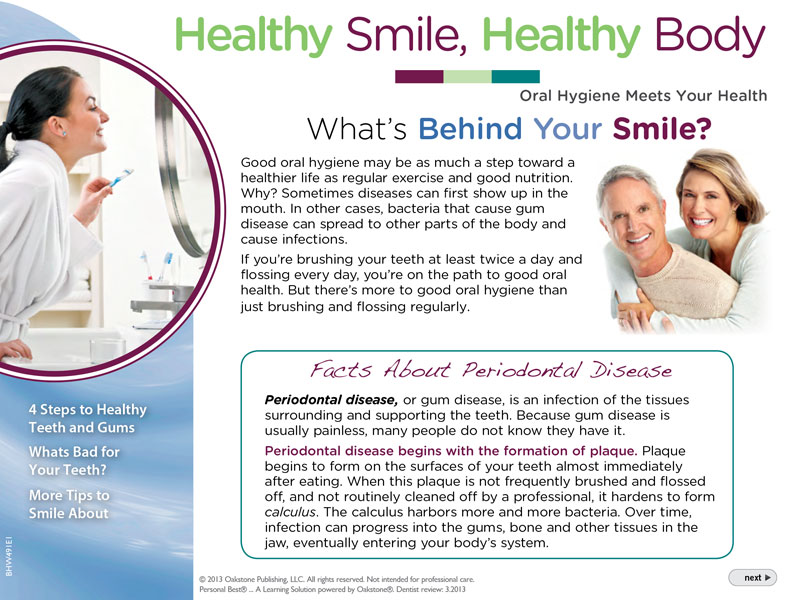Category Archives: Uncategorized
3 Step Plan for a Week of Healthy Eating
Healthy eating doesn’t just happen with the snap of your fingers. It takes thought and a bit of work to make sure you are set up with everything you need. We have a plan you can follow to make sure you are doing what you need to get ready for a week of smart food choices.
- Start by cleaning out your fridge and pantry
Get rid of (or donate) anything that’s going to tempt you to overeat or blow your budget. If you share a kitchen with others, try designating one cupboard or shelf in the kitchen as your “healthy food only” section so that you only see the healthy stuff and don’t get tempted by other foods.
- Make a plan for your visit to the grocery store
Before you hit the grocery store, make a plan. Think through your upcoming week and what you want for breakfast, lunch, and dinner. If you enter the grocery store with your week planned out, it’s easier to avoid buying foods that may hurt your calorie budget. Get some inspiration from this healthy grocery list.
Remember: the healthy items are generally around the edge of the store. Be aware of that when you’re in the store and aim to spend more time on the perimeter.
We know you’ve heard it a million times but it bears repeating, don’t shop hungry! On top of that, one study suggests you may even benefit from having a healthy snack (like an apple) before a trip to the store.
- Once you’re in the store:
- Use a cart, not a basket. While it may go against your intuition to choose a cart over a basket, research shows that shoppers using a basket are more likely to make unhealthy purchases.
- Visit the produce section first and choose brightly colored, nutrient-packed fruits and veggies. These foods are high in fiber, so they keep you full without using too many calories. Filling your cart with fruits and veggies ensures you have plenty of calorie friendly foods on hand.
- Pick your protein. Protein helps you build and maintain strong muscles as you’re losing weight. Plus, it’s hard for your body to digest protein, which means you’ll burn more calories digesting protein. Focus on lean meats, fish, eggs, dairy, nuts, seeds, and fruit and veggies to get your protein in!
- Consider stocking up on healthy staples. Having things like brown rice, whole wheat pasta, oatmeal, whole grain bread, and cans of beans in your pantry can quickly serve as a healthy side dish to a meal, making it easier to stay on track. Plus, these foods are all packed with fiber, which is key for weight loss!
- Plan to snack smart by selecting some low-cal and filling snacks. Our favorites snacks to have on hand are popcorn kernels (air pop kernels in a brown paper bag in the microwave), frozen edamame, frozen fruit (a perfect sweet treat in place of ice cream) and granola bars (look for at least 3 grams of protein and fiber, and less than 10 grams of sugar).
Bonus Tip!
When you get home spend some time preparing your food for the week: Peel your veggies, wash your fruit and pre-portion your snacks. Anything you can do ahead of time will be a big help during week.
This article is brought to you by Lose It! advisor, Dr. Roshini Raj. Dr. Raj is a board certified gastroenterologist and internist. Dr. Raj is also a nationally-known media personality; she is a TODAY Show contributor, the Good Day NY Medical Correspondent (Fox5) and the Medical Editor of Health magazine. She has also been quoted in The New York Times, The Wall Street Journal, Cosmopolitan, Men’s Health, and Women’s Health and Fitness.
We know that these suggestions may seem like a lot of work but it will save you time in the upcoming week. With these tips, staying on track is going to be much easier. Do you have a tip related to preparing for a healthy week? Let us know via Facebook or Twitter!
Healthy Smile Healthy Body
August Personal Best
Sorry for the confusion, here’s the correct link for the August Personal Best!
- Exercise Help Online
- Serving Sizes – Reality Check
- Vaccination: A Smart Investment
- Help For Hot Flashes?
- Leave Work On the Job
- Housekeeping Hints for Work
- Care for Caregivers
- Credit Inquiries: What You Need to Know.
- Inheriting Debts
- When Not to Buy in Bulk
- 10 Tips For Taking It Slow
- Stay Safe With the Walking School Bus
- Your Home While Your Away
- Better Family Nutrition
Reduce stress by de-cluttering your desk and office
Feeling stressed and overwhelmed? Take a deep breath and then take a look around. Is your space neat and orderly, or is it cluttered and disorganized? If it’s the latter, it may actually be contributing to your stress level.
 Research shows that clutter can cause stress by overwhelming our brains with excessive stimuli, distracting us and interfering with our ability to focus, promotes anxiety and an inability to relax, and inhibits productivity and creativity. It can also even contribute to feelings of guilt and shame—for example, when others visit your cluttered office. In honor of Organize Your Home Office day on March 10, here are some simple strategies you can use to begin de-cluttering your desk, office, and more.
Research shows that clutter can cause stress by overwhelming our brains with excessive stimuli, distracting us and interfering with our ability to focus, promotes anxiety and an inability to relax, and inhibits productivity and creativity. It can also even contribute to feelings of guilt and shame—for example, when others visit your cluttered office. In honor of Organize Your Home Office day on March 10, here are some simple strategies you can use to begin de-cluttering your desk, office, and more.
General tips for de-cluttering any space:
- Divide things into 3 piles: Keep, Donate, and Trash. Anything you’re sure you’ll need, keep it. Anything you don’t really have a need for but that is still usable can be donated. And anything unwanted and unusable should just go in the trash.
- Take a trip down memory lane. Think back to the last time you used a particular item. If you’ve never used it, or you don’t see a reason to use it in the future, it’s probably a good candidate for the Donate pile.
 Tips for de-cluttering your office:
Tips for de-cluttering your office:
- Clean off the top of your desk. Having a clear desk can help you have a clearer mind! File important papers, throw away junk that’s accumulated, and find jars or mugs to store pens and pencils in. Aim to have very little on your desk—your computer and phone are the absolute essentials. To keep yourself happy and motivated while working, you may also want to add a special framed photo or meaningful quote to, or hung above, your desk.
- Pressed for time? Instead of cleaning out your entire desk at one time, just dump the contents of one drawer onto the floor. Quickly sort through the contents and choose what to keep, donate, or trash. Then reorganize the drawer with only the items you want to keep. To keep the momentum going, choose a time that you’ll tackle the next desk drawer, and set a reminder on your phone so you don’t forget.
- De-clutter your computer. Avoid having a messy digital desktop. Use folders to organize your files. You can also drop most of your programs—especially the ones you don’t use every day—into a folder, or at least remove their icons from your desktop. Visual digital clutter can be stress-inducing, too.
- Create a “pending” space. You may not have time to go through your mail every day. Instead of letting it pile up on the corner of your desk, designate a “pending” box for all items you still need to go through and deal with. Set a reminder on your phone to go through this box once a week to sort the items and file them, respond to them, etc.
- De-clutter your desk daily. Don’t let papers or trash pile up. At the end of every day, take 5 minutes to neaten up your desk. That way, you’ll be able to start fresh the next morning and be productive in your neat area.
How food literate are you? Answer these 15 questions to find out!
Sun Sense and Skin Protection
Eggplant In Your Garden?
Healthy Cooking: How to Cook Eggplant
10 Tips for Hot Summer Runs
It takes time for your body to adjust to hot and/or humid weather. Just because you can run a 10-miler at an 8-minute pace, doesn’t mean you can do the same when the dog days of summer approach. The American Running and Fitness Association recommends that on your first run in the heat, you should cut your intensity by 65 to 75 percent. Then over the next 10 days, slowly build back to your previous level.
2. Check the Index
Before heading out on your run, it’s a good idea to check the air quality index and the heat index. If the air quality index is code orange, and you’re sensitive to air pollution and/or have upper respiratory problems, you may not want to run. If it’s code red, it’s not suitable for anyone to run.
The Heat Index tells you what the temperature feels like when combining the air temperature and the relative humidity. For example, if the air temperature is 90 degrees and the relative humidity is 70 percent, then it’s going to feel as if it’s 106 degrees. Ouch! These are not good running conditions.
The weather section of your local TV station’s website usually provides air quality index and heat index information for your area.
3. Hydrate! Hydrate! Hydrate!
Many runners remember to rehydrate after their run and some consume water or sports drink during the run, but it’s even more important to be well-hydrated before you run. As a rule of thumb, drinking 16 oz. of water two hours before your run will ensure good hydration levels and give the water time to pass through your system so you don’t have to make any pit stops during your run.
Hydration during your run depends on the temperature and the length of your run. If you’re running 4 miles or less, you probably won’t need to carry any water with you. If you’re running longer than 4 miles you may need to wear a hydration belt or stash some water/sports drink along your route, especially if it’s hot and humid.
Don’t wait until you feel thirsty to drink. If you’re thirsty, that means you’re already low on fluids. Also, as you age, your thirst mechanism isn’t as efficient and your body may in the early stages of dehydration and you may not even feel thirsty.
For the first 45 to 60 minutes, water is fine. After 60 minutes, you’ll need to start using a sports drink or supplementing with a sports gel or a salty food such as pretzels. After 60 minutes (and sometimes sooner if it’s really hot and you sweat a lot), you begin to deplete vital electrolytes (i.e., sodium, potassium, etc.). Sodium is needed in order for your body to absorb the fluids you’re ingesting. Ever get that sloshing feeling late in a run? That’s probably because your body is low on sodium and not able to absorb the fluids you’re drinking, so it just sits in your stomach and sloshes around not doing you any good. Depleted potassium levels can increase your chances of experiencing muscle cramps.
After your run, you need to replace the water you’ve lost. A good way to check this is to weigh before your run and then weigh after your run. Drink 16 oz. of water for every pound lost. After you do the weigh-in a few times, you’ll get a feel for how much rehydration you need depending on how much you sweat on your run.
On a hot long run, pack an extra bottle of water. Don’t drink this one. Instead, during the run periodically pour a little of the water on your head. This actually helps increase the evaporation-cooling effect.
4. Know the Warning Signs
Dehydration occurs when your body loses too much fluid. This can happen when you stop drinking water or lose large amounts of fluid through diarrhea, vomiting, sweating, or exercise. Not drinking enough fluids can cause muscle cramps. When you’re dehydrated, you may feel faint, experience nausea and/or vomiting, have heart palpitations, and/or experience lightheadedness.
Runners also need to be aware of the signs of severe dehydration such as heat exhaustion and heatstroke, not only for yourself, but so you’ll be able to identify the symptoms if a fellow runner is experiencing heat-related problems.
Heat Exhaustion usually develops after several days of exposure to high temperatures and inadequate intake of fluids. The elderly and people with high blood pressure are prone to heat exhaustion as well as people working or exercising in the heat. Heat exhaustion symptoms include heavy sweating, paleness, muscle cramps, tiredness, weakness, dizziness, headache, nausea, vomiting, and/or fainting. With heat exhaustion, a person’s skin may feel cool and moist.
Cooling off is the main treatment for heat exhaustion. Drinking cool, non-alcoholic liquids may help as well as taking a cool shower, bath, or sponge bath. Getting into an air-conditioned environment will also help. If the conditions worsen or have not subsided within an hour, seek medical attention. If heat exhaustion is not treated, it may lead to heatstroke which needs immediate emergency medical attention. Call 9-1-1.
Heatstroke is the most severe of the heat-related problems. Like heat exhaustion, it often results from exercise or heavy work in hot environments combined with inadequate fluid intake. Children, older adults, obese people, and people who do not sweat properly are at high risk of heatstroke. Other factors that increase the risk of heat stroke include dehydration, alcohol use, cardiovascular disease and certain medications. Heatstroke is life threatening because the body loses its ability to deal with heat stress. It can’t sweat or control the body’s temperature. Symptoms of heatstroke include rapid heartbeat, rapid and shallow breathing, elevated or lowered blood pressure, lack of sweating, irritability, confusion or unconsciousness, feeling dizzy or lightheaded, headache, nausea, and/or fainting.
If you suspect heatstroke, call 9-1-1 immediately. Then try to move the person out of the sun and into a shady or air-conditioned space. Cool the person down by spraying them with cool water or wrapping them in cool damp sheets. Fan the person, and if possible, get the person to drink cool water.
5. Buddy Up
In the severe heat, be sure to run with a buddy. That way you can keep tabs on each other. Sometimes it’s hard to tell if you’re starting to suffer the effects of the heat, but a buddy may be able to spot the signs before it’s too late.
6. Run Early
If at all possible, run in the early morning. The hottest part of the day is typically around 5 p.m. So, if you can’t run until after work, wait until later in the evening.
7. Go Technical
Wearing light-colored running tops and shorts made of technical fabrics will keep you cool and allow moisture to evaporate more quickly. Staying dry will also help prevent chafing. Clothing made of polyester, Lycra, Nylon, CoolMax, and Dry-Fit are some examples of technical fabrics. Mother Nature has a few good fabrics too. Clothing made from bamboo fibers as well as Smartwool are very effective in moisture management. Be sure to hang dry your technical fabric running clothes. The fabric softener in dryer sheets can actually block up the fabric decreasing its moisture-wicking abilities.
8. Change Your Route
If your normal running route is treeless, find one that provides more shade. If this isn’t possible and you have access to a treadmill, run indoors on really hot days.
9. Lather it on
Be sure to wear sunscreen. Research has shown that runners have a higher rate of skin cancer. This is probably due to the fact that we’re outside more than the average person and during the summer months we’re outside and wearing less clothing than the average person. So, be sure to use a sports sunscreen that’s waterproof with an SPF of 15 or higher. There are some brands of sunscreen available that are made to go on over wet skin. This is great for sweatier runners like. Also, be sure to wear sunglasses and a hat or visor. This will help to keep the sun out of your eyes as well as the sweat. Be sure the glasses provide 100 percent UV protection and that the hat is made of light technical fabric that promotes evaporation.
10. Have a Plan
Let your family and friends know your running route. If you’re gone too long, they’ll know where to look for you. If you run on rural greenways or trails, you may even want to pack your cell phone. Don’t change your running route plans at the last minute without letting someone know. It’s better to be safe than sorry.
July Personal Best
Sorry for the confusion on the July Personal Best blog post. For the July Personal Best open this pdf.
- The Emotional Side of Losing Weight
- Checklist: Safeguard Your Health
- Good Healthcare Takes Action
- Eyeglasses or Contacts?
- After the Heart Attack: FAQ’s
- Friendships On The Job: Do They Work?
- Strategies For Self-Motivation
- Keep Your Cool for Less
- Get To Good Financial Habits
- Prepaid Cards
- 10 Tips for National Fireworks Safety Month
- Working in the Great Outdoors
- Splish-Splash Safety
- Cool Meals for Hot Days








